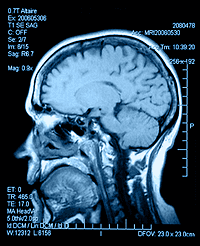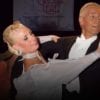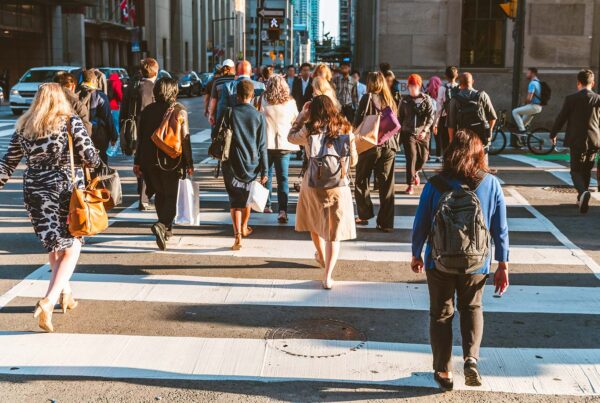 So, all that chocolate. Relaxing in front of the fireplace (real or digital). Now, how to work off the holiday binging?
So, all that chocolate. Relaxing in front of the fireplace (real or digital). Now, how to work off the holiday binging?
If you’re like most people, you’ve at least started thinking about your exercise and eating program for the new year. But what about your brain? What are you doing to make your mind more fit? Did you know that dancing is one of the best ways to get smarter?
In his book Mozart’s Brain and the Fighter Pilot, Richard Restak explains that the brain is susceptible to “disuse atrophy,” a kind of breakdown of neural pathways symptomatic of Alzheimer’s patients. As we do passive activities like watching TV, our brains become atrophied. Other kinds of activities enhance the brain “muscle,” making it stronger.
The brain responds to exercise the same way other muscles do, getting stronger when used and weaker when not. But it has one notable exception: it’s the only muscle in the body that never loses its ability to grow stronger. Although there are very real effects of aging, such as reduced neural connection points, we use so little of the brain (less than 10% of capacity in our lifetime) that the impact doesn’t have to be felt. We just grow less mentally agile because, as we get older, we tend to spend less time learning and more time allowing our brains to be passive.
Restak emphasizes that the brain is an organ that actually improves with use, even as you grow old. What’s more, while most of us include some sort of physical exercise into our daily (or weekly) routines, Restak argues that we should incorporate regular mental exercise into our routines as well.
Knowledge, according to Restak, is a kind of networking in the brain in which connections are always changing. The brain, he says, is a “work in progress.” Throughout our lives, our brains are constantly changing. Restak recommends that we choose memory-enhancing activities that maximize connections within the brain. The best are physical activities that force our brains to coordinate the prefrontal cortex and the primary motor cortex. These activities include playing sports that require fine motor control, and playing sports that require general motor control and balance.
Ballroom dancing, and especially when applied with the intensity needed for competition, meets all of these criteria. Dr. Joseph Coyle, a Harvard Medical School psychiatrist, says that “the cerebral cortex and hippocampus, which are critical to these activities, are remarkably plastic, and they rewire themselves based upon their use.” So it’s no wonder that other studies have proven the effectiveness of dancing as a memory enhancing sport.
Richard Powers explains it like this: When brain cells die and synapses weaken, things like nouns go first, like names of people, because there’s only one neural pathway connecting that stored information. If the single neural connection to that name fades, we lose access to it. As we age, we learn to process in parallel, to come up with synonyms to get around those roadblocks (assuming we don’t become dimmer bulbs as a result of inactivity). Powers says that whatever you can do to create new neural paths helps keep the memory sharp.
A study by the Albert Einstein College of Medicine which was published in the New England Journal of Medicine looked at about 500 people over a 21-year span to see how different activities affected memory. The study found that those who frequently ballroom danced experienced a 76% reduction in the risk of Alzheimer’s and other memory diseases. It was by far the most impressive activity in terms of improving mental agility. The next closest activity yielding any memory benefits saw only a 12% reduction!
Why dancing?
The question of why dancing had the greatest impact wasn’t answered specifically. But there are many conclusions from other studies which seem to provide the answers.
When you are involved in a physically demanding activity, blood flow to the brain increases, which helps neuron synapses connect more efficiently. In addition, activities which require split-second rapid-fire decision making are better for memory than those requiring little new decision making, such as jogging or golf. Many athletic activities are built on pre-existing memorized pathways, especially for those who do them frequently. Dancing, explains Powers, integrates several brain functions at once. “Dancing simultaneously involves kinesthetic, rational, musical and emotional processes.” This is further enhanced in the more intense environment of competition.
Whether you follow or lead probably has little impact. Women have to interpret the signals given by their partner, which involves intense split-second decision making. But men have to lead by reading the music and the floor ahead of them, then deciding how to respond, then creating the appropriate lead for their partners. This may be just as intense as the follower’s role. It would be nice if a study were done on this at some point. Dancing with different partners probably has a greater benefit, because you would not be relying as much on existing neural pathways, but if you’re dancing at all, you’re better off than most people. In addition, changing your routines or groupings regularly as you dance (especially for competitors) would be beneficial.
So there you have it. Include the brain in your workout program. If you aren’t dancing now, get started. If you are, consider pumping up the intensity by moving up to the next level or getting involved in competition.













Thanks for sharing this interesting blog topic. Dancing is one of the best ways to stay fit for people of all ages. It has a wide range of physical and mental benefits.